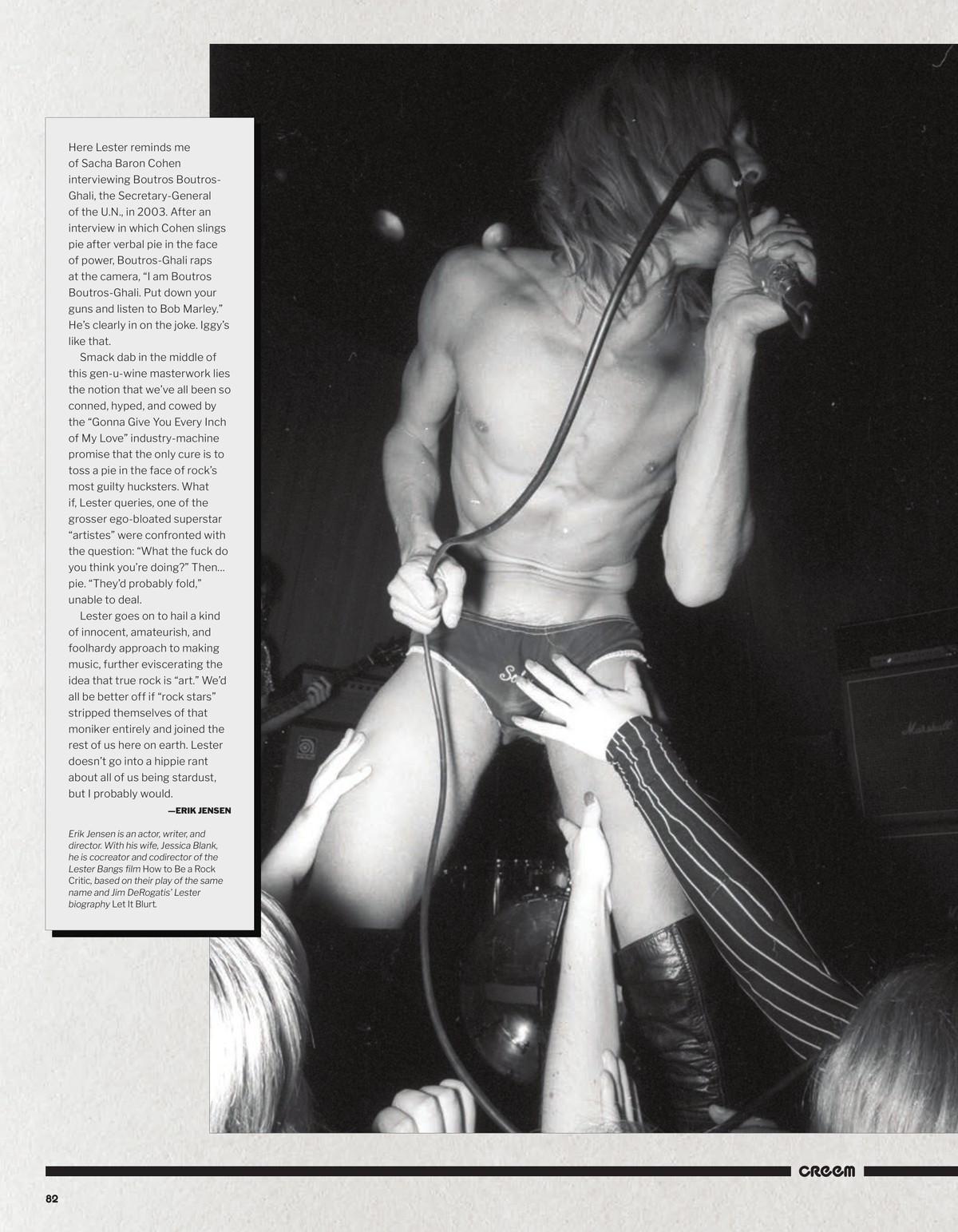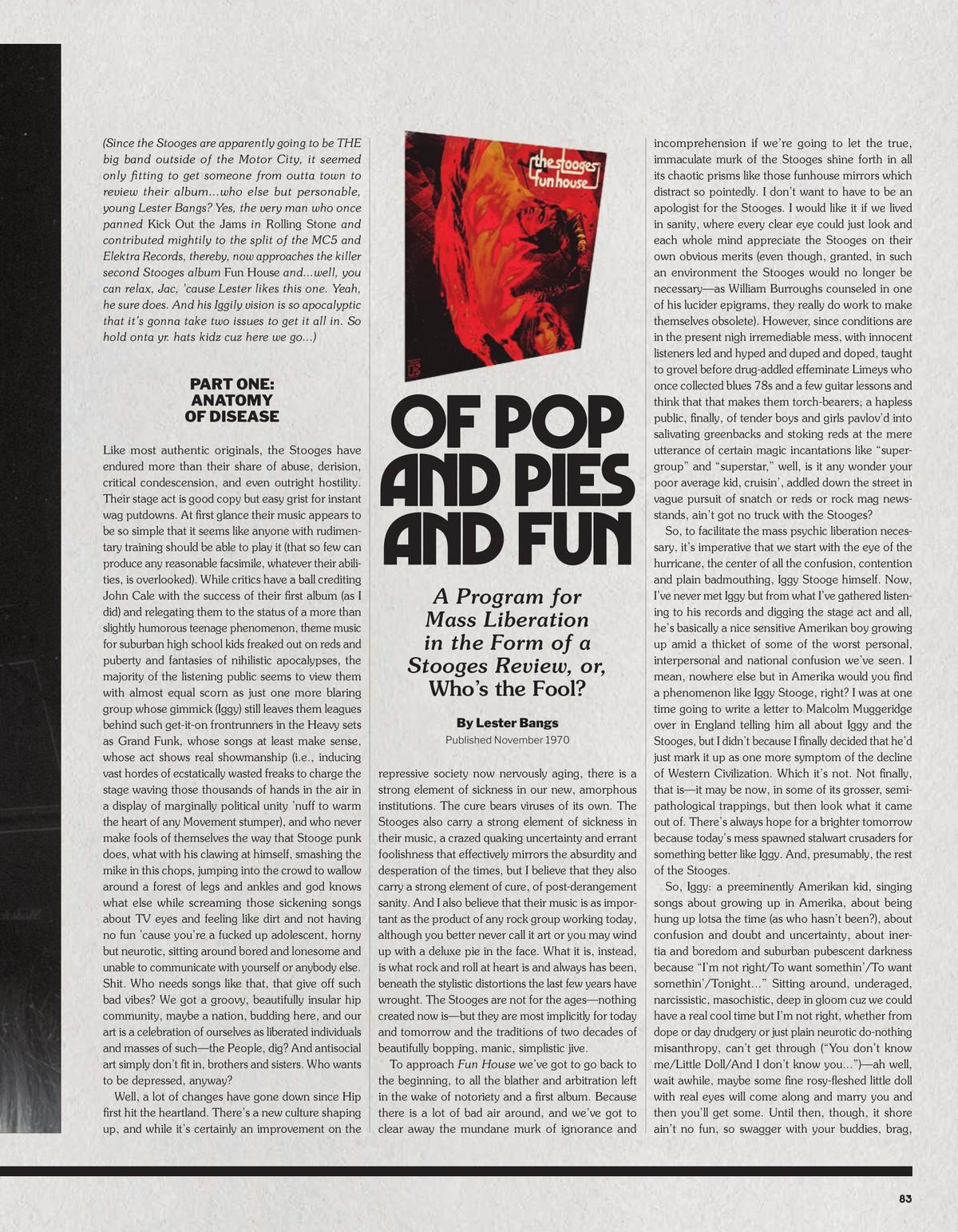OF POP AND PIES AND FUN
A program for mass liberation in the form of a Stooges review, or, who’s the fool?


Here Lester reminds me of Sacha Baron Cohen interviewing Boutros BoutrosGhali, the Secretary-General of the U.N., in 2003. After an interview in which Cohen slings pie after verbal pie in the face of power, Boutros-Ghali raps at the camera, “I am Boutros Boutros-Ghali. Put down your guns and listen to Bob Marley." He’s clearly in on the joke. Iggy’s like that.
Smack dab in the middle of this gen-u-wine masterwork lies the notion that we’ve all been so conned, hyped, and cowed by the “Gonna Give You Every Inch of My Love” industry-machine promise that the only cure is to toss a pie in the face of rock’s most guilty hucksters. What if, Lester queries, one of the grosser ego-bloated superstar “artistes” were confronted with the question: “What the fuck do you think you’re doing?” Then... pie. “They’d probably fold,” unable to deal.

